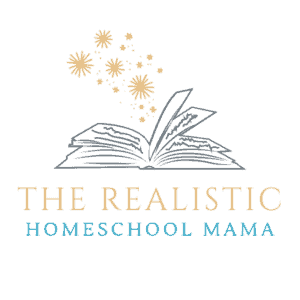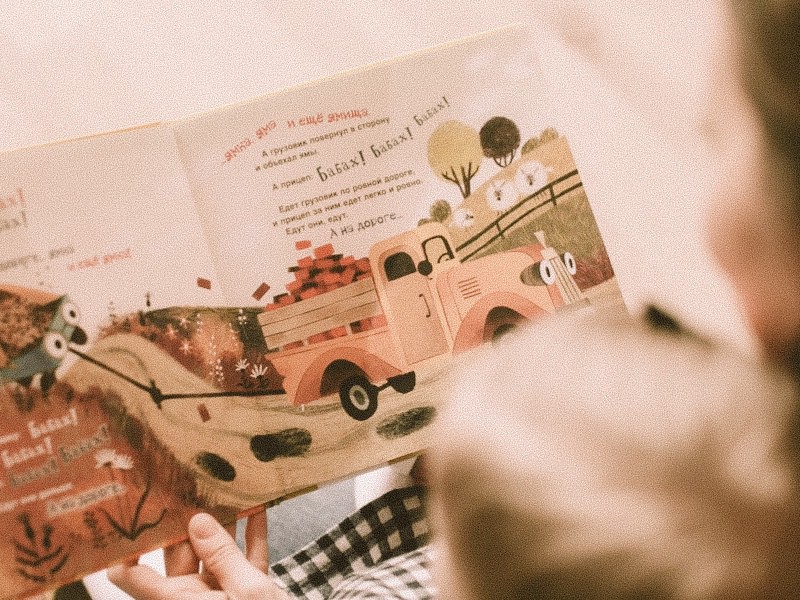While there is nothing wrong with a good reading curriculum, if you don’t have one, don’t despair! I don’t use a curriculum to teach my five littles to read, and it has been a great experience so far.
Even if you don’t have a reading curriculum, you can teach a child to read by using common items found around your home such as paper and pen, homemade stories and games, and library books.
Here are some ideas on how you can support your child on their reading journey without a formal curriculum:
1. Read to Your Children
Start early by reading to your children often.
This is probably pretty obvious to most, but I’m going to reiterate anyway….read to your kids, read to your kids, read to your kids! Read books and magazines, newspapers a postcards, songs and poetry, recipe and cereal boxes. Reading to your little (AND big) kids is going to help them build their vocabulary, learn about books in general and learn about the world around them.
Pointing to the words as you read can be a really powerful tool in helping kids learn to read. Growing up, I loved it when my parents would point to the words as they read aloud and would beg them to do it. I remember my dad would use a chopstick from the drawer in the kitchen to point to the words as he read to us because it was easier than using his finger. As I got older, I began to recognize more and more words by sight, until eventually I simply picked up a book and began reading on my own!
If you want some great free resources for teaching your kids to read, visit my post 27 FREE Homeschool Resources for Every Age and Subject
2. Wait Until They Are Ready
Look for signs of readiness.
I believe in respecting a child’s right to learn to ready when they are truly ready to learn. However, I know this can make a lot adults uncomfortable at first, as most children, when left to their own timeline, will learn to read much later than what most people consider “average”.
Forcing children to learn to read at age 5 and then claiming that is the the average age children learn to read doesn’t mean that’s the age the were ready, it just means that is when you decided to force them to learn.
How do you know if your child is ready to begin reading? The main way to know if your child is ready to begin reading is to observe if they are expressing interest in learning.
Other signs could be things like knowing the upper and lowercase letters and knowing the sounds letters make. However, much of this can also be learned as they go, so I wouldn’t consider these prerequisites. For example, I have a niece and nephew who are both adept readers, yet still can’t recite the alphabet by memory.
3. Teach Word Families and Sight Words
Start with Word Families
I’ll usually start with my children with “at” words. Instead of asking them to try to sound it out, I tell them what “at” says and have them memorize the sound. Then, we simply start putting different sounds in front of “at”.
Cat, bat, sat, hat, etc.
Then, I’ll pick another sound and do the same thing…
“ight”.
Night, blight, tight, etc.
Some words don’t fit the phonics rules, but you get the point.
Teach Sight Words
Flash cards can work well for simple, common words, like the, and was, is, on, etc.
Choosing words that link together or are words your child already knows allows you to write simple sentences to read. Use their names, and it makes it more fun. Ex.: Simon had a fat cat. Clay sat on a mat.
4. Go to the Library
Love your local library.
Regular visits to the library is one of the best things you can do to instill a love of books and reading into your child!
Letting your little ones pick out their own books instills a sense of ownership and makes them excited to read them (or have them read to them).
Encouraging older kids to utilize the library to research subjects they are interested in or projects they are working on teaches them the power that books can have in helping them accomplish their goals.
5. Use Real Books
Choose quality literature over “learn to read” books.
There’s nothing more boring than a phonics reader! At our house, we only use “real” story books, ones with quality illustrations and riveting story lines.
Reading text books, phonic readers or any kind of book that is designed with the sole purpose of teaching someone to read is a surefire way to kill the imaginative and magical experience that books can create.
Choosing books that capture the imagination and instill an eagerness for reading is key to developing a lifelong love for learning.
6. Answer Their Questions
Encourage curiosity as it arises.
Answering your child’s questions about reading as they arise is one of the simplest ways to help a child learn to read.
And there will be lots of questions! “How do you spell ‘hidden treasure?’”, “what does this say?”, “what sound does this letter make?” “How do you write ‘you are invited to the circus?’” and so many more!
Waiting until a question rises naturally instead of trying to force the information on them randomly means they will absorb and retain the information much, much better!
7. Tell Stories
Storytelling and Songs
Reading isn’t the only way to help your children grow in literacy development.
Spending time with your kids telling stories, singing songs or saying rhymes is a wonderful way to develop reading readiness.
Sharing stories and singing every day helps your child’s development in soooo many ways. It will help your littles get to know sounds, expand their vocabulary, grow their imagination and develop a life long love of storytelling in general.
8. Utilize Audiobooks
Use technology to your advantage.
Once a child develops a love of books, their appetite for being read to can become insatiable! I can read to my children often, but can’t always keep up with how much they want to be read to.
Audiobooks to the rescue! I have found audiobooks to be wonderful tools in our homeschool. Listening to audio books allows my kids to access stories that might be beyond their reading level while also building an impressive vocabulary and intimate understanding of the anatomy of a story.
Listening to audiobooks while driving in the car, or during afternoon “rest time” can be a great alternative to tv, ipads and screen time in general.
Our local library will often have audio books with read along books that allow the kids to “read” the book while listening. This in itself has made their reading comprehension grows by leaps and bounds!
9. Prioritize Play
Play your way to reading.
Repeat after me. Play is how children learn. Play is how children learn. Play is how children learn.
Play is how children have ALWAYS learned. And the science is now backing what us mama’s have always known. Play doesn’t only mean happy, less stressed kids, it also makes for better learners.
Play prepares the brain for reading. You can’t skip to the reading part without the play part. My kids play with books and play games that include books well before they start any sort of reading, and yet this play eventually leads them directly into the path of literacy.
Here are some examples of play that supports reading:
- Playing library.
- Building doll houses with books.
- Crafting books out of cardboard and paper.
- Playing mailman; making play letters and magazines and “delivering” them.
- Writing imaginary letters to Santa.
- Playing secretary.
- Playing teacher or “school”.
- Sending letters and packages to cousins and friends.
- Playing garage sale.
- “Reading” to dolls.
- Decorating with alphabet stickers.
The creative ideas of children are literally endless! Watch your children play, and I bet you’ll be surprised how they start to incorporate reading into their daily activities.
10. Play Games
Use games to give reading a purpose.
Play a game that requires reading creates an immediate, real life application for reading.
There are so many games you can play with your children that involve or encourage reading!
Board games, word games, imagination games, video games, card games…you get the idea!
Words are all around us and playing games are a great way to include reading practice naturally.
Games can also be a great way to learn math. Check out this post 17 WAYS UNSCHOOLERS LEARN MATH for more great ideas about helping your unschooler to learn math.
11. Create Books and Newspapers
Craft your way to literacy.
Crafting books, newspapers and magazines is one of my children’s favorite rainy day activities.
Utilizing nothing but some cardboard, typing paper, a various assortment of tape and glue, they make their own homemade books and magazines, then fill the pages with real and imaginary writing,
Inevitably, I end up answering my fair share of questions about how to spell or write this and that as they fill the pages with their imaginative creativity.
12. Write notes to each other.
Sharing notes with Mommy makes reading fun!
My seven-year-old is currently fascinated with writing, yet shows little interest in reading or being read to.
Because of this, I have taken to writing little notes to him throughout the day, and he responds in turn by writing notes back to me.
It has become our own special little way of communicating with each other, and his word recognition and spelling has improved by leaps and bounds!
Now go check out this blog post for 17 more awesome ideas to support you kids in learning to read without a curriculum!
Recent Posts
The freedom to educate our own children in the whatever method we see best suited to their needs is a freedom I do not take lightly, and am eternally grateful for. SO much is available to us, and...
There are a LOT of things about the Charlotte Mason method of homeschooling that appeal to me. However, the theory of intentionally developing good habits in your children is one that I admittedly...



